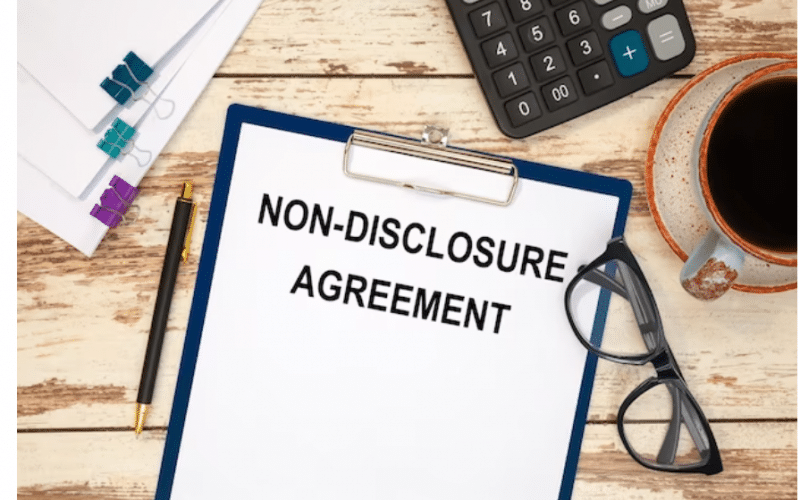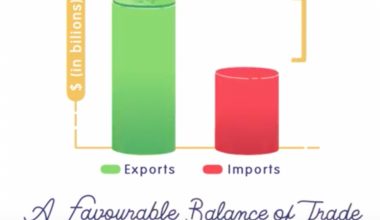Employers often require employees to sign a non-disclosure agreement (NDA) to protect confidential information and maintain proprietary privacy. This agreement can be beneficial for employees who may be restricted from discussing company aspects or business operations. In this article, we shall explore the benefits of a non-disclosure agreement that restricts you from discussing the company.
What Is a Non-Disclosure Agreement (NDA)?
A non-disclosure agreement (NDA) is a legally binding contract that establishes a confidential relationship between parties. It ensures that sensitive information is not made available to others. Additionally, NDAs are common in negotiations between businesses, allowing them to share sensitive information without fear of competitors’ access.
Note that:
- An NDA shows a confidential relationship between two or more parties and protects the information they share from disclosure to outsiders.
- The NDA is common before discussions between businesses about potential joint ventures.
- Employees are made to sign NDAs to protect their employer’s confidential information.
- It is also called a confidentiality agreement.
- Non-disclosure agreements can be divided into mutual and non-mutual agreements, which are the two main categories.
How Do Non-Disclosure Agreements Work?
NDAs are crucial in protecting companies’ interests and potential deals by preventing the disclosure of sensitive information about business processes or plans. Companies may require new employees to sign NDAs if they have access to sensitive information.
Furthermore, NDAs may also be used before discussions between investors and companies seeking funding to prevent competitors from obtaining trade secrets or business plans. However, many investors are hesitant to sign NDAs, fearing that they will hinder future deals and make them difficult to enforce. Therefore, if an NDA is breached, the other party may seek court action to prevent further disclosures and seek monetary damages.
What Are The 3 Types Of Ndas?
#1. Unilateral NDAs:
Unilateral NDAs, such as employer-employee, company-contractor, inventor-evaluator, seller-buyer, and seller-buyer NDAs, require one party to disclose confidential information to another. For instance, employers restrict employees’ use of company information, while company-contractor NDAs restrict contractors’ knowledge and non-competition clauses. While seller-buyer NDAs restrict buyers from sharing confidential information during the sale of goods or services.
#2. Bilateral NDAs:
Bilateral NDAs, also known as mutual NDAs or two-way NDAs, require both parties to disclose confidential information and limit its sharing. Note that they are commonly used in negotiations involving large amounts of private business information, such as corporate takeovers, joint ventures, and mergers and acquisitions.
#3. Multilateral NDAs:
Multilateral NDAs involve three or more parties sharing information and requiring each party to protect it from further disclosure. These agreements eliminate the need for separate bilateral or unilateral NDAs between parties. Examples include a single multilateral NDA with parties A, B, and C, which can be used in complex negotiations.
Multiparty confidentiality agreements, for example, allow companies to ensure that each party discloses confidential information and determines their interest in further agreements.
What Is The Purpose Of A Non-Disclosure Agreement?
NDAs are crucial in industries with proprietary, confidential employer information, including but not limited to:
- Trade secrets,
- Scientific and technical information,
- Technical and engineering data,
- Actual or anticipated research,
- Marketing and development plans,
- Operating and testing procedures,
- Proprietary computer code or computer programs,
- Customer contact information,
- Financial information relating to:
- Price and cost data,
- Unreleased financial statements,
- Company liability information,
- Cash flow reporting,
- Internal cost information,
- Company asset information
- Reasonably anticipated business,
Generally, an NDA commits employees to maintaining confidential information without authorization, providing a legal framework for protecting proprietary knowledge. Therefore, these agreements help businesses maintain a competitive edge by safeguarding proprietary knowledge within the organization.
Why Is It Important To Have A Non-Disclosure Agreement?
#1. Protecting Proprietary and Confidential Information:
Employers require employees to sign NDAs to safeguard proprietary and confidential information, such as trade secrets, client lists, marketing strategies, and financial data.
Most firms recognize the importance of protecting such information and the enforceability of well-drafted NDAs. NDAs play a crucial role in protecting client and customer information, ensuring compliance with privacy regulations, and building trust with clients.
Additionally, they also protect a company’s reputation by preventing unauthorized disclosures and negative comments. Therefore, employers can benefit from an employment lawyer’s advice and assistance in developing a well-drafted NDA to protect proprietary rights from improper disclosure.
#2. Preserving Reputation and Preventing Defamation Claims:
Signing a release restricting employees from speaking about a company can protect its reputation and prevent defamation claims. The Liberal and Slander Act provides a legal framework for defamation claims. Therefore, employees agree not to make derogatory or false statements that could harm the company’s reputation. However, NDAs cannot prevent individuals from reporting unlawful or unethical conduct to authorities, and such provisions may be unenforceable.
What Are The 5 Key Elements Of A Non-Disclosure Agreement?
#1. Participants in the Agreement:
Non-disclosure agreements must clearly define the parties involved, including individuals, employees, or representatives. Therefore, companies must define themselves in an NDA, especially in complex legal structures, to determine ownership of sensitive information. Companies may list any legal entity under a broad ownership umbrella.
#2. Definition of Confidential Information
An NDA must define what information is considered confidential, as it is the company’s responsibility to identify what information must not be shared. The difficulty lies in not disclosing such information within the NDA, which can be assigned to a large group. For example, a company may decide that any information from its research and development department is confidential.
#3. Exclusions of Confidentiality:
Companies often define what is not confidential in agreements, stating that all information shared with an external party is confidential except for specific items determined by the company. Therefore, these agreements aim to catch any exceptions that might have otherwise slipped through.
#4. Appropriate Uses of Information:
A company may declare no information confidential but restrict external party usage. For example, disclosing operating processes to another party may not allow them to share them with competitors or replicate the information for personal financial gain.
#5. Time
Research and development often lead to the expiration or loss of valuable proprietary information. For example, in the early days of Apple iOS, the operating system components were unknown, and the technology was widely unknown. Today, this information is replicated or adapted into newer technologies, causing sensitive information to lose its luster, and companies often define when it is no longer confidential.
What Are Examples Of Nondisclosure Agreements?
Here are some scenarios where NDAs might be employed:
#1. Business partnerships:
This is when an NDA is used to ensure two companies that have engaged in business together never disclose information regarding their business, like financial data or trade secrets.
#2. Employee agreements:
Employee agreements are NDAs that prevent employees from disclosing consumer data or business strategies to competitors or outsiders.
#3. Investor agreements:
Investor agreements are NDAs that prevent investors from sharing company data or sensitive financial data with others or using it against the company.
#4. Mergers and acquisitions:
This NDA prevents companies that have been involved in the exchange of confidential information from sharing it with competitors or using it against one another.
How Long Should NDAs Last?
NDAs typically last for the agreed-upon term, which can be as long as the parties agree. Trade secrets, which lack registration-type protection, can only be protected as long as they are kept secret. Generally, the term of an NDA typically ranges from 2 to 3 years, depending on the transaction and information sharing.
What Happens If An Employee Breaks An NDA?
An employee breaking an NDA may face consequences, such as monetary fines, termination of employment, or asset return. While not considered a crime, it can be if the violation involves trade secret theft. Typically, a lawsuit may result in monetary fines, termination, or asset return, depending on the agreement.
Can You Terminate An NDA?
Parties to an NDA must have the option to terminate for convenience, allowing them to cease discussion and terminate the agreement at their discretion.
What Is A Confidentiality Agreement?
Confidentiality agreements are legal documents that prohibit sharing or profiting from classified information. Common examples include non-disclosure agreements (NDAs), which are managed by legal teams in large organizations. These agreements ensure the confidentiality of business information and expertise.
What Is The Difference Between Nda And Confidentiality Agreement?
Confidentiality agreements and Non-Disclosure Agreements (NDAs) are two types of agreements that protect secret information.
NDAs are better for one-way communication of classified information, while confidentiality agreements are more suitable for projects requiring the exchange of proprietary information.
Furthermore, NDAs are often used by inventors before filing patent applications, as public disclosure of patentable ideas waives patent rights. Companies also extend NDAs to prospective employees or contractors to ensure trade secrets or proprietary information privacy. For example, technology companies, manufacturers, and marketing agencies have employees who are required to sign NDAs to protect confidential data from competitors.
Confidentiality agreements are crucial for joint projects or partnerships involving sensitive data sharing. For example, an equipment manufacturer and supplier can use a confidentiality agreement to share specifications while revealing manufacturing methods.
Generally, choosing between an NDA or confidentiality agreement is essential for safeguarding businesses’ IP and classified information.
How Many Pages Should An NDA Have?
The length of an NDA depends on the sensitive nature of the information being disclosed and the parameters for disclosure and non-disclosure. A general NDA typically takes 3-4 pages, depending on the information, protection measures, and other essential clauses.
For mutual NDAs, the length may vary, as both parties want to maintain confidentiality and prevent disclosure. The length is largely determined by the clauses and language used in the NDA.
HOW TO WRITE A LETTER OF AGREEMENT: Tips & Guide
SERVICE AGREEMENT: Definition and All to Know
EMPLOYEE ENGAGEMENT ACTIVITIES: Best engagement activities for work in 2023






